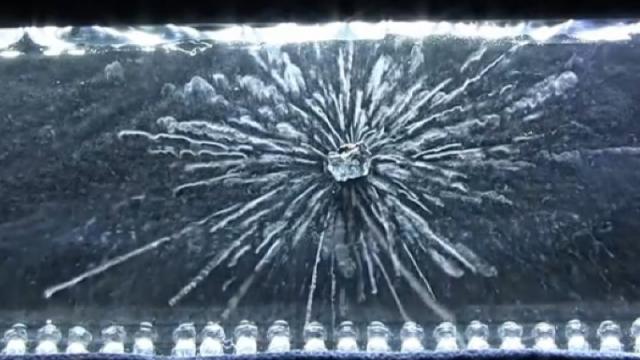Radiation tends to strike fear in the hearts of the general populace, particularly the ionizing variety produced by X-rays and radioactive elements. But most have no idea what actual radiation looks like. Now a French organisation called CloudyLabs has found a way to let us see the process in action using a simple cloud chamber.
First isolated from pitchblende in 1789, uranium is a radioactive heavy metal, which means it decays over time, emitting alpha particles in the process, as it turns into various other elements, like radium, helium, thorium. (This happens very slowly. The most stable uranium isotope, U-238, has a half-life of roughly 4,468,000,000 years.)
Cloud chambers are a nifty little invention dating back to 1895, when a Scottish physicist named Charles Wilson was trying to create a small-scale version of cloud condensation in the lab. Within 15 years, he had figured out that the charged particles — like electrons or protons, or alpha and beta particles — would leave a trail of condensation in the gas in the cloud chamber, just like contrails from an aeroplane. And he took the first photographs of those tracks.
They’re now a staple of science museums like San Francisco’s Exploratorium, allowing anyone to watch the wispy tracks left by cosmic rays entering Earth’s atmosphere from space. (You can even make your own cloud chamber at home, if you’re the handy sort.)
The folks at CloudyLabs used their cloud chamber to track the alpha particles being emitted from a chunk of uranium-rich pitchblende. Per their description:
“most of the vapour condenses on the glass surface creating a mist, but a small fraction of it stays in vapour form above the cold condenser. This creates a layer of unstable saturated vapour which can condense at any moment. When a charged particle crosses this vapour, it can knock electrons off the molecules forming ions. It causes the unstable alcohol vapour to condense around ions left behind by the travelling ionizing particle: the path of the particle in the matter is then revealed by a track composed of thousands droplets of alcohol.”
The full video is 50 minutes (and in French with subtitles), and after the first 40 there’s hardly any alcohol left in the chamber to detect the particle tracks. But it’s worth taking at least five to 10 minutes to marvel at the wonders of the subatomic world made visible by a late 19th century apparatus.
Image and video: CloudyLabs
[Via IFL Science]
